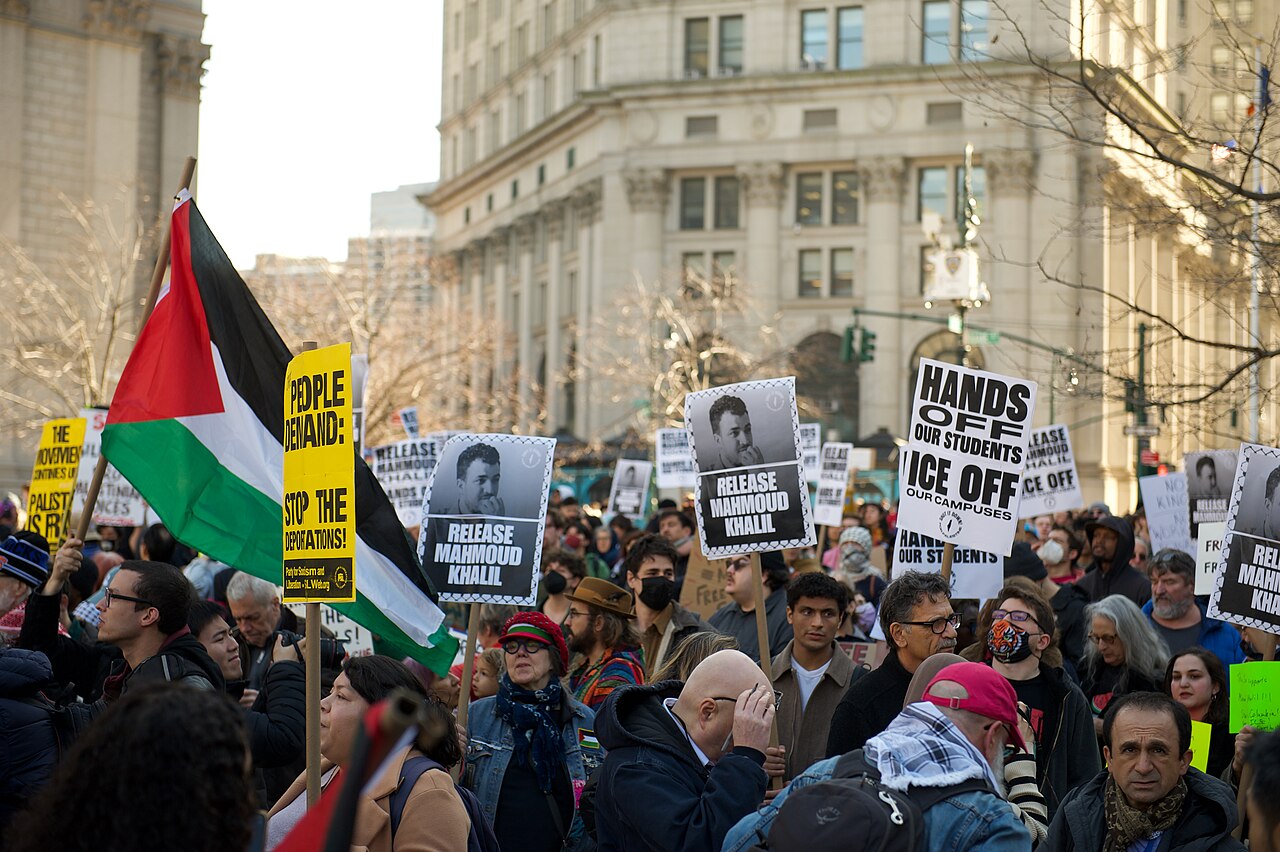What Are the Legal Pathways for Central Americans to Enter the U.S.?
The conventional wisdom about immigration suggests that the migrants arriving at the U.S.-Mexico border are cheating the system, “skipping the line” or otherwise blatantly breaking the rules. The United States is a country of laws, the thinking goes, and hopeful migrants should not be allowed to enter unless they do so legally. But what are these legal options?
Published by The Lawfare Institute
in Cooperation With

The conventional wisdom about immigration suggests that the migrants arriving at the U.S.-Mexico border are cheating the system, “skipping the line” or otherwise blatantly breaking the rules. The United States is a country of laws, the thinking goes, and hopeful migrants should not be allowed to enter unless they do so legally. But what are these legal options? We decided to try to answer this question by looking at the categories for visas to the United States and the availability of these options for the 162,000 Central Americans who arrived at the U.S.-Mexico border in the past fiscal year.
First, there is no simple description of the Central Americans who seek to leave their countries and travel to the United States. Migrants from El Salvador and Honduras often come from larger cities, where gang violence is rampant, while those from rural areas in Guatemala often note family or domestic violence as a driving factor. Migrants from across the highlands of Guatemala or the rural areas of Honduras may seek to leave behind grinding poverty, exacerbated at times by a shifting local economy or climate change. The reasons for leaving home drive each migrant’s hopes for what he or she will find or achieve in the United States, and these motivations ultimately determine what legal pathways are available.
For Central Americans looking to apply for visas to the United States from within their countries, there are two visa categories: non-immigrant and immigrant.
Non-immigrant visas include options as varied as tourists looking to spend their vacations at Disney World, students completing degrees at U.S. universities and workers coming for temporary employment opportunities. For this latter program, Central Americans can apply for temporary work visas that aim to bring low-skilled workers for seasonal agricultural jobs in the United States (H-2A) or seasonal non-agricultural jobs (H-2B); in fiscal 2017, the United States approved 245,183 visas for these two categories. Only 4 percent of those approvals, or 9,365 visas, however, were issued to Salvadorans, Hondurans and Guatemalans. The vast majority, 86 percent, were issued to Mexican nationals. This makes sense from a practical perspective: Mexico has a population four times that of Honduras, El Salvador and Guatemala combined, and it is more costly for employers to contract Central American workers, given the additional recruitment and transportation costs.
There are several additional categories of non-immigrant work visas, including the H-1B and L-1, yet the majority of Central American migrants would not qualify for these. Applicants for the H-1B visa, for example, must be sponsored by a company and must have at least a bachelor’s degree, must demonstrate specialized knowledge in a technical field and must not be in competition with U.S. workers. Unlike tourist visas, though, in some cases recipients of the H-1B and L-1 visas are able to adjust their immigrant status to become permanent residents once in the United States. These cases are rare, however, and almost all the Central American migrants arriving at the United States’ southern border would not meet the strict professional career requirements and so would not be eligible for such visas in the first place.
In general, these temporary work, tourist or education options, and all other non-immigrant visas, would not be available to Central Americans if they are looking to permanently move to the United States. These temporary visas can almost never later be converted into any form of permanent residency. Logically, then, most Central American migrants should be seeking an immigrant visa. There are four major categories of immigrant visas: family reunification, long-term workers, special immigrants and refugee admissions.
Within the first immigrant visa category—family reunification—there are three broad channels: immediate relative petitions, K visas (fiance visas) and family preference. The appropriate channel depends on whether the person filing the paperwork is a U.S. citizen or legal permanent resident and the nature of the family relationship. The eligible family relations are as follows:
|
Category |
Eligible Family Members |
|
Immediate Relative |
U.S. citizens can file paperwork for:
|
|
K Visa |
U.S. citizens can file paperwork for:
|
|
Family Preference |
U.S. citizens can file paperwork for:
Legal permanent residents can file paperwork for:
|
In the category of immediate relatives, there are an unlimited number of available green cards and wait times are dictated by demand. This is similar to K visas, which are actually non-immigrant visas but ones whose recipients are expected to adjust to immigrant status after the fiance arrives in the United States and the couple is married. This is not the same for the “family preference” category, however, and wait times can be much longer (since immediate relatives receive priority). Currently, there is a 22-year wait for U.S. citizens or permanent residents who are applying for their Mexican relatives under the category of family preference. The wait times are shorter for Central Americans, but they still reach as long as 13 years. Most importantly, family reunification is an option only for Central Americans who have family members with a legal status (citizen or permanent resident) in the United States.
The second immigrant visa channel is the long-term work visa. Unlike temporary work visas, these long-term work visas provide a path to permanent residency and, later, citizenship. For these employment-based immigration visas there are five preference-based levels, most of which are applicable only for high-skilled laborers. Very few apply to the Central American migrants arriving at the U.S.-Mexico border. For example, the First Preference (EB-1) visas are eligible for “persons of extraordinary ability in the sciences, arts, education, etc.,” such as for experienced professors with a tenure-track job offer. In the Third Preference (EB-3) there is a permanent work visa available for low-skilled labor, but it requires a full-time job offer and a certification from the Labor Department that there are not sufficient U.S. workers for that particular job. In fiscal 2017, only 74 individuals from El Salvador, Guatemala and Honduras received permanent work visas of any kind.
The third category for permanent immigration into the United States is through the diversity green-card system. This program randomly selects 50,000 immigrants from countries with low levels of U.S.-bound immigration. In fiscal 2017, 13 individuals from Guatemala and 26 from Honduras immigrated to the United States through the lottery system. El Salvador did not receive any slots in the diversity lottery.
The fourth, and final, option under the immigrant visa category is to gain refugee status. In contrast to how it treats asylum requests, the United States institutes a cap on refugee admissions from each region of the world. Applicants must demonstrate that they face a well-founded fear of persecution due to race, religion, nationality, membership in a particular social group or political opinion. For Latin America, the annual cap is 1,500 refugees; from October 2017 through June 2018, the United States admitted 571 refugees from Central America, with 31 from Guatemala, 488 from El Salvador and 52 from Honduras. These were the final admissions from the Obama administration’s Central American Minors (CAM) program, which allowed high-risk young people with parents in the United States to file refugee applications in the region. A related program allowed those minors who were denied refugee status to be considered for parole, an immigration status that allows them to be temporarily admitted to the United States. The Trump administration ended both programs, and the CAM program was phased out in the beginning of 2018.
Finally, there is asylum, which is outside both the immigrant and non-immigrant categories in the U.S. immigration system. To apply for asylum, applicants must demonstrate a well-founded fear using the same criteria as in the refugee process. Unlike every other form of permanent immigration status, however, asylum claims cannot be made at U.S. embassies or consulates. Rather, asylum claims can be made only after the migrant sets foot on U.S. soil. Applicants do not need to have any form of legal status in the United States, and they are not required to solicit asylum at a port of entry (see U.S.C. §a 1158). That said, for Central American migrants facing violence in their home countries—and who are ineligible for a non-immigrant visa—this means that the only way to seek asylum is to at least reach the United States border. (Of course, migrants could also seek asylum in countries closer to their own, including Costa Rica or Mexico.) In fiscal 2016, some 40,000 Central Americans filed for asylum in the United States.
It is within this immigration framework that Central Americans looking to migrate must make their decisions. For most Central Americans, there are few options to bridge the gap between the factors driving migrants’ decisions to leave and the available visa options to the United States. While in more extreme cases, particularly for migrants fleeing violence, there are currently no immediate in-country options. This means that most Central Americans arriving at the U.S.-Mexico border are likely not skipping a U.S. immigration line, but rather finding that an applicable line may not even exist.






